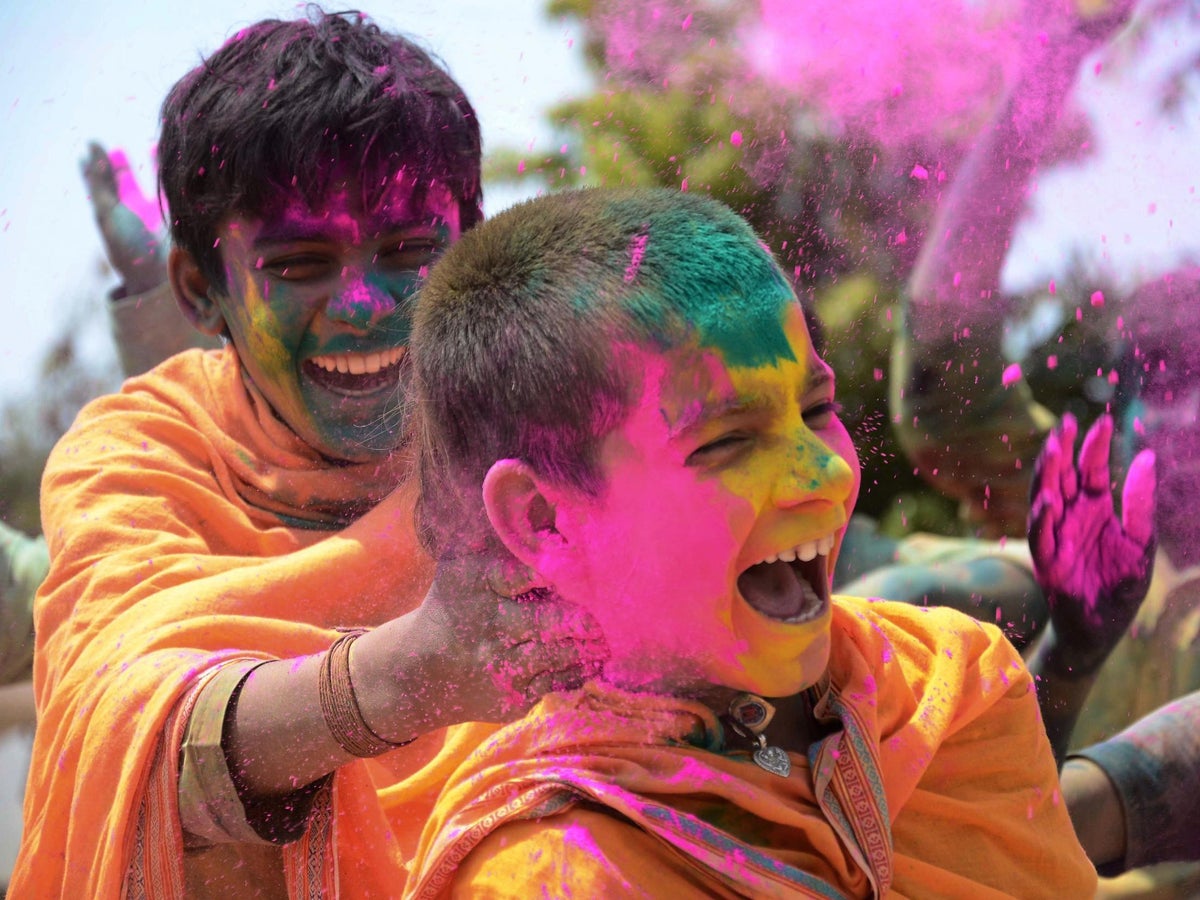
On 25 March people around the world will celebrate the Hindu festival of Holi, also known as the “Festival of Colours”.
Observed for centuries, the festival is a jubilant occasion that sees Hindus create bonfires and cover each other in rainbow-hued powder to commemorate the beginning of spring.
From the festival’s significance to how it is celebrated, here’s everything you need to know about Holi:
What is Holi?
In addition to marking the arrival of spring, Holi also celebrates fertility, colour, love, and the triumph of good over evil.
The origins of the festival can be found in various legends in Hindu mythology, one of which tells the story of a demon, Holika, and her brother, King Hiranyakashipu.
Holi 2019 in pictures: Hindus celebrate Indian Festival of Colours
Show all 20According to the legend, King Hiranyakashipu believed that everyone should worship him as a god. His son, Prahlada, refused to do so, opting to worship the Hindu god Vishnu instead.
Spurred by his son’s disobedience, the king and his sister Holika plotted to kill Prahlada. As part of their plans, Holika lured Prahlada onto a pyre in an attempt to burn him to death.
While sitting on the pyre with Prahlada, Holika donned a magical shawl that protected her from the fire. However, as the pyre burned, the shawl flew from Holika’s shoulders onto Prahlada’s, resulting in the demon perishing in the flames.
Vishnu, the god who Prahlada had chosen to worship instead of his father, then appeared. Taking the form of a half man and half lion, the god killed the treacherous king.
On the night before Holi, bonfires are lit to signify the burning of Holika and the victory of good over evil. Some Hindus who observe the festival will also smear themselves with ashes from the fire, as a symbol of purification.
One of the other legends pertaining to Holi tells the tale of the love shared between the Hindu deities Radha and Krishna, who is frequently depicted with blue skin.
The ancient legend tells how Krishna fell in love with Radha, but was concerned their difference in skin colour would keep them apart.
After voicing his concerns, Krishna's mother encouraged him to smear a brightly coloured powder on Radha's face.
After doing so, Radha then returned Krishna's love and the pair were married.
It is said that lovers have continued this tradition ever since, painting their faces the same colour in celebration of Holi and their love.
When does it take place?
This year, Holi falls on Monday, 25 March. The timing of Holi depends on the moon, meaning that the date of the event can vary, although it usually occurs in March to mark the end of winter.
The festival is split into two events, beginning with Holika Dahan on the night before the main festivities and culminating with Rangwali Holi on the next day.
How is it celebrated?
The oldest accounts of Holi being commemorated date as far back as the 4th century. It’s celebrated around the world, although the festivities predominantly occur in India and Nepal.
The festival begins with Holika Dahan, the ritual burning of pyres that take place the night before. This tradition is mostly followed in regions including North India, Nepal and South India.
Wood and the other materials burnt in the bonfires are collected days in advance, while an effigy of Holika is also typically placed on top of the pyre.
On the day of Holi, the main portion of the festival, Rangwali Holi, is observed.
Those taking part in the festivities cover each other in gulal, a fine powder that comes in many different colours, while also being drenched in water.
The colours of the rainbow are all symbolic in Hinduism. For example, red represents sensuality, while green symbolises life and happiness, Sanskriti magazine outlines.
Yellow is believed to represent knowledge, white signifies purity, and blue symbolises determination.
Before joining in the fun of the “Festival of Colours”, people are advised to take appropriate precautions to take care of their skin and hair.
According to Times of India, one should apply oil to their face, exposed skin and hair to protect against staining colours.
Once the celebrations are over, it’s recommended that those who took part shower as soon as possible to remove the colours.
They should use lukewarm water to wash the colours from their face, and refrain from rubbing their skin too roughly.







